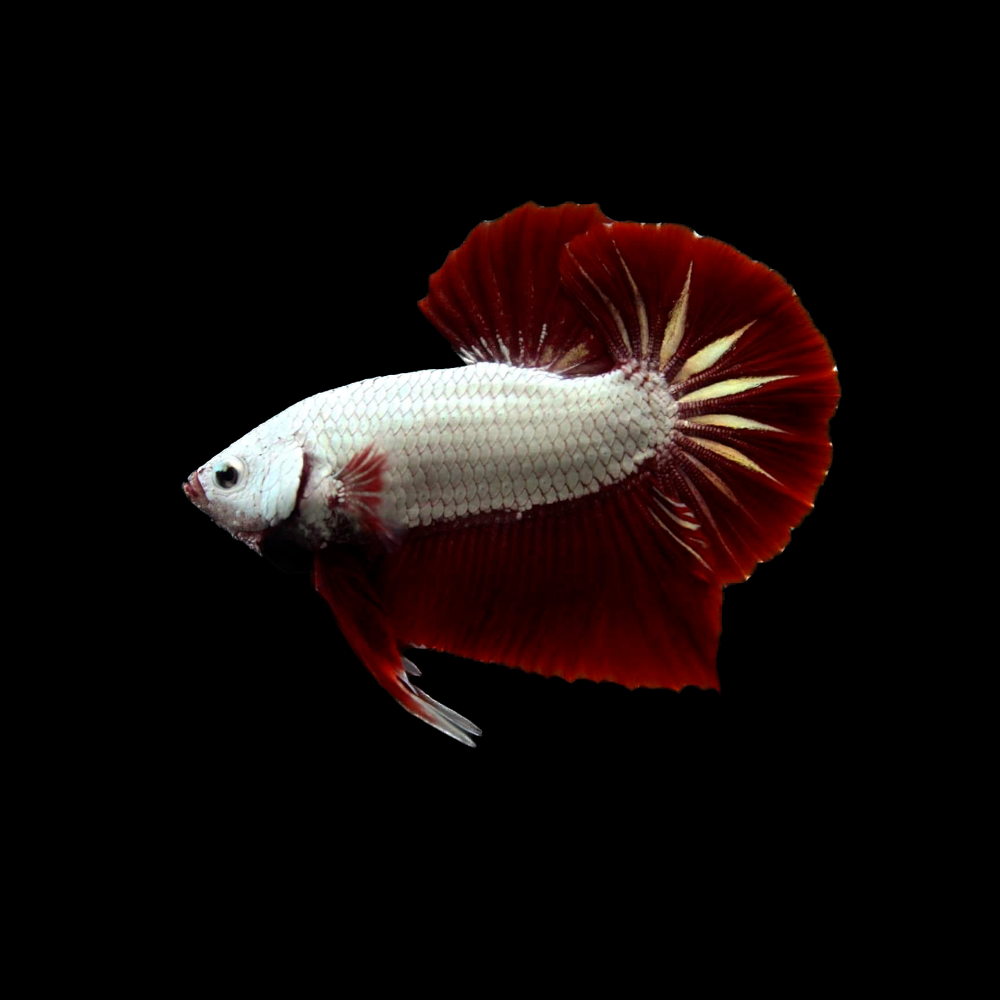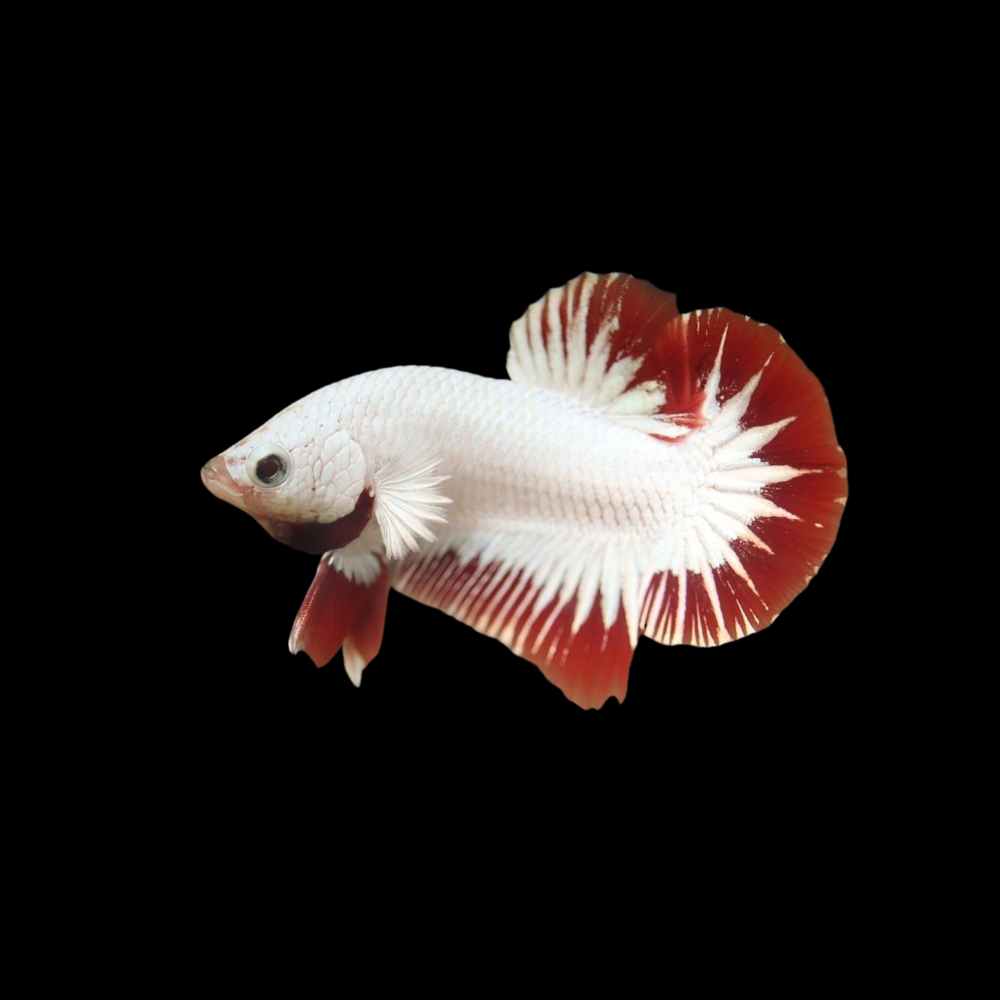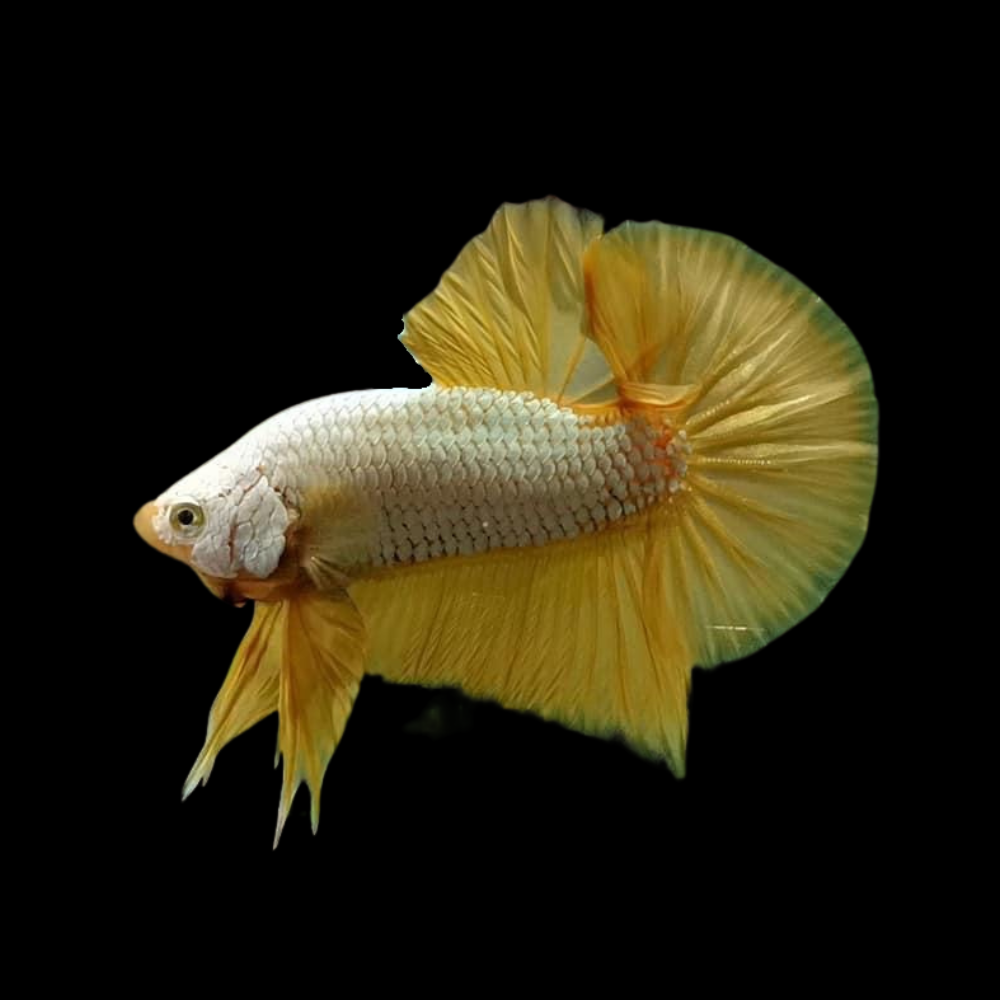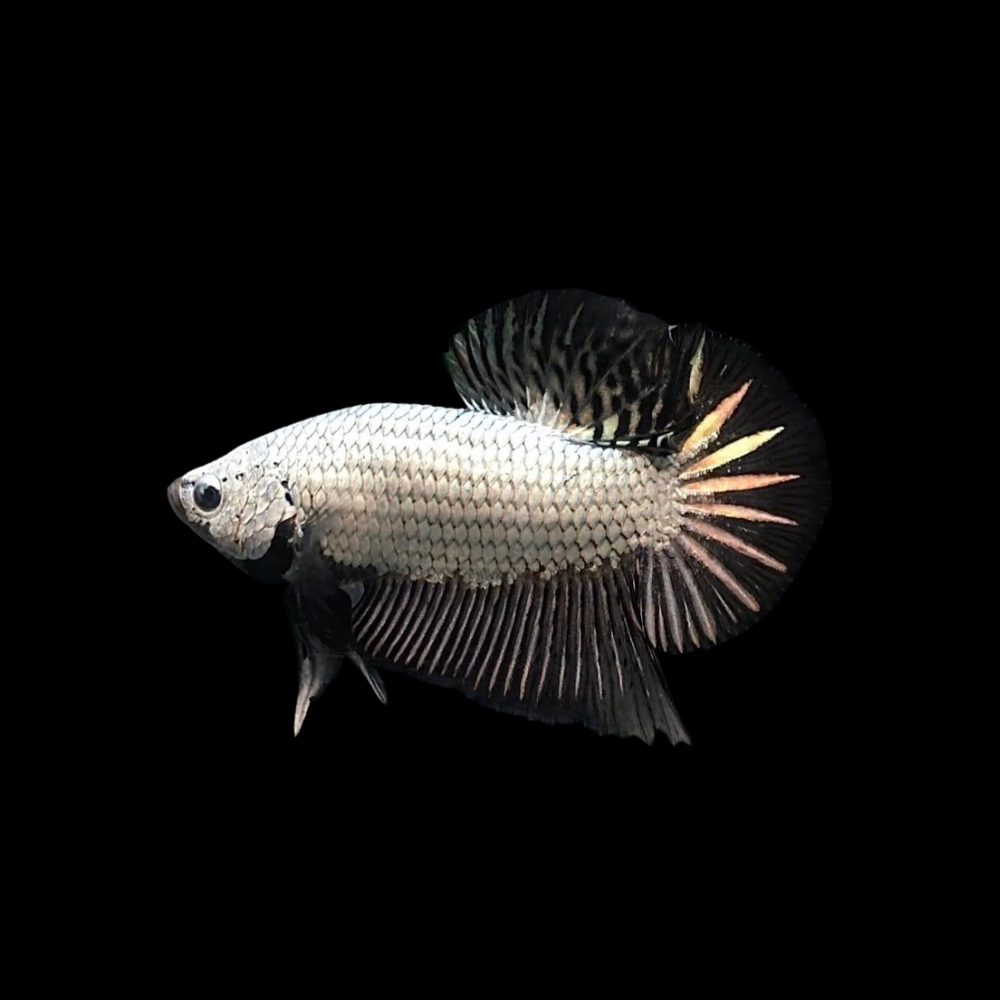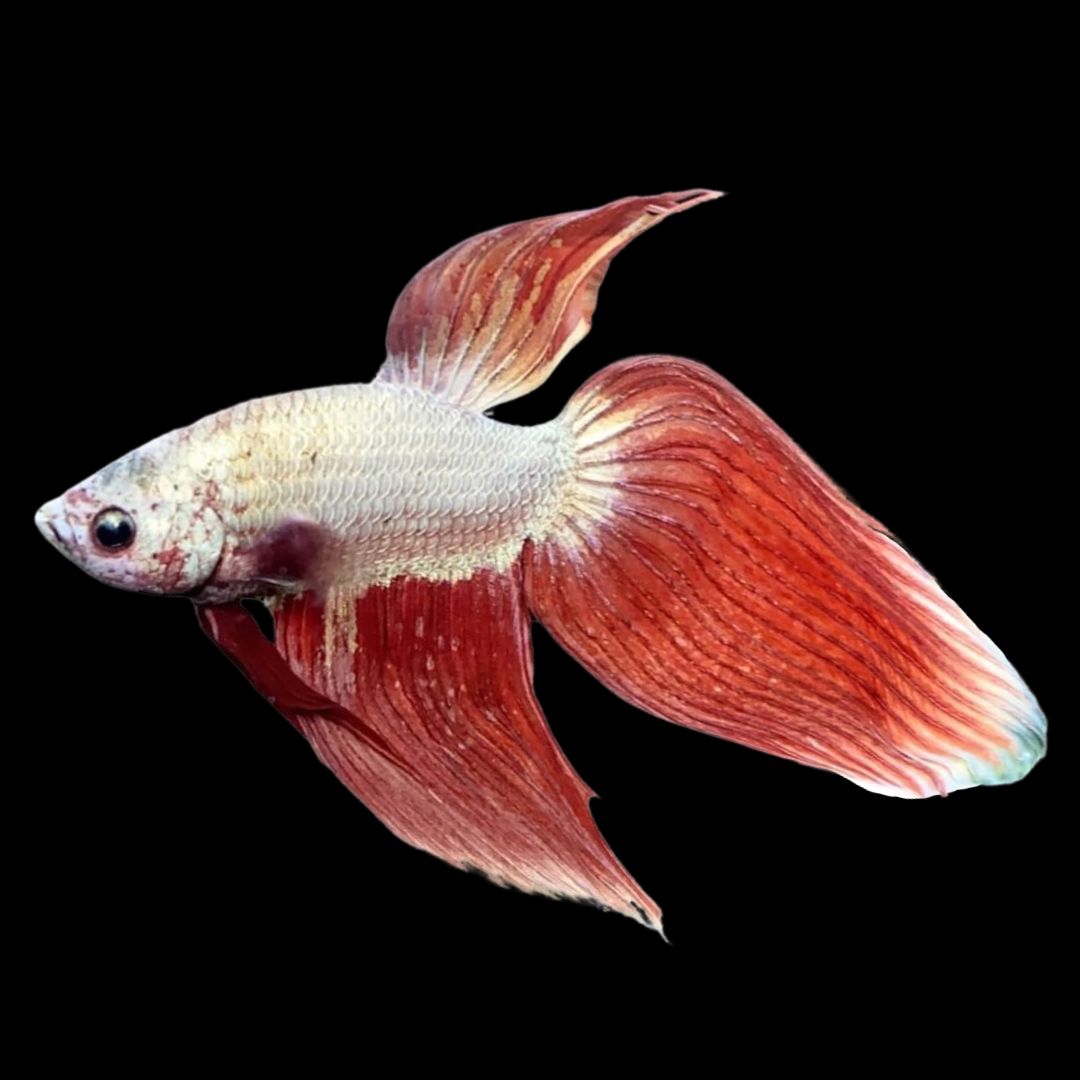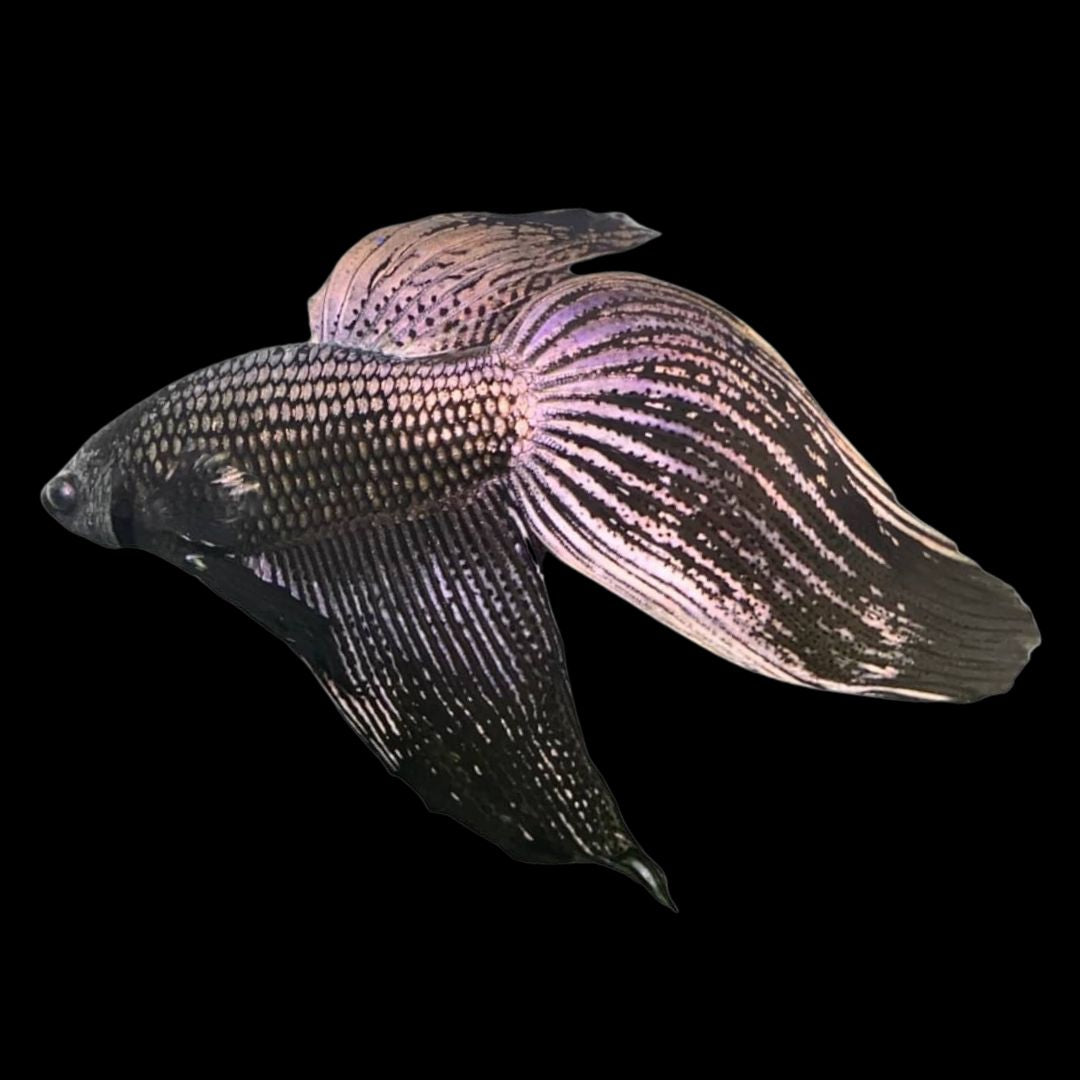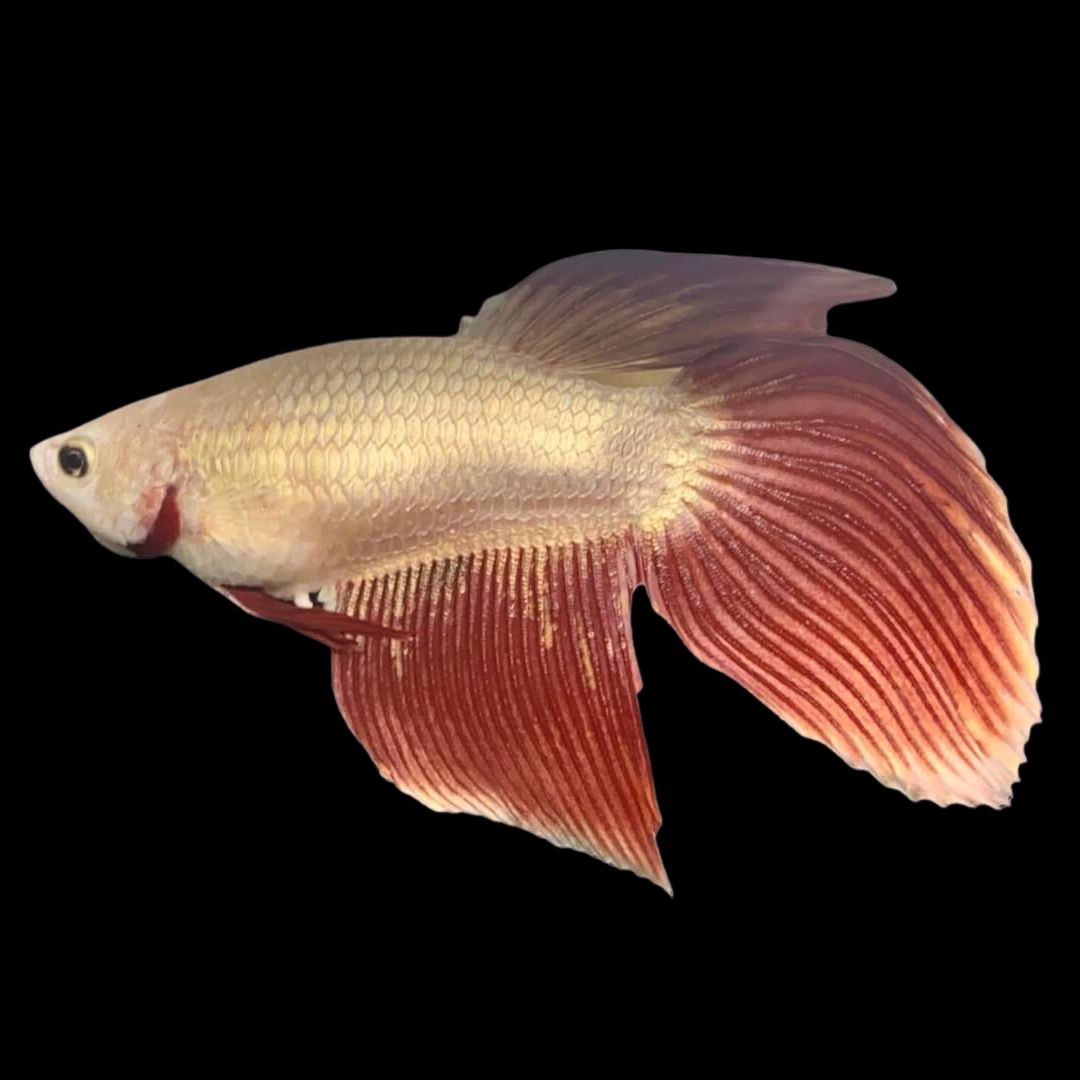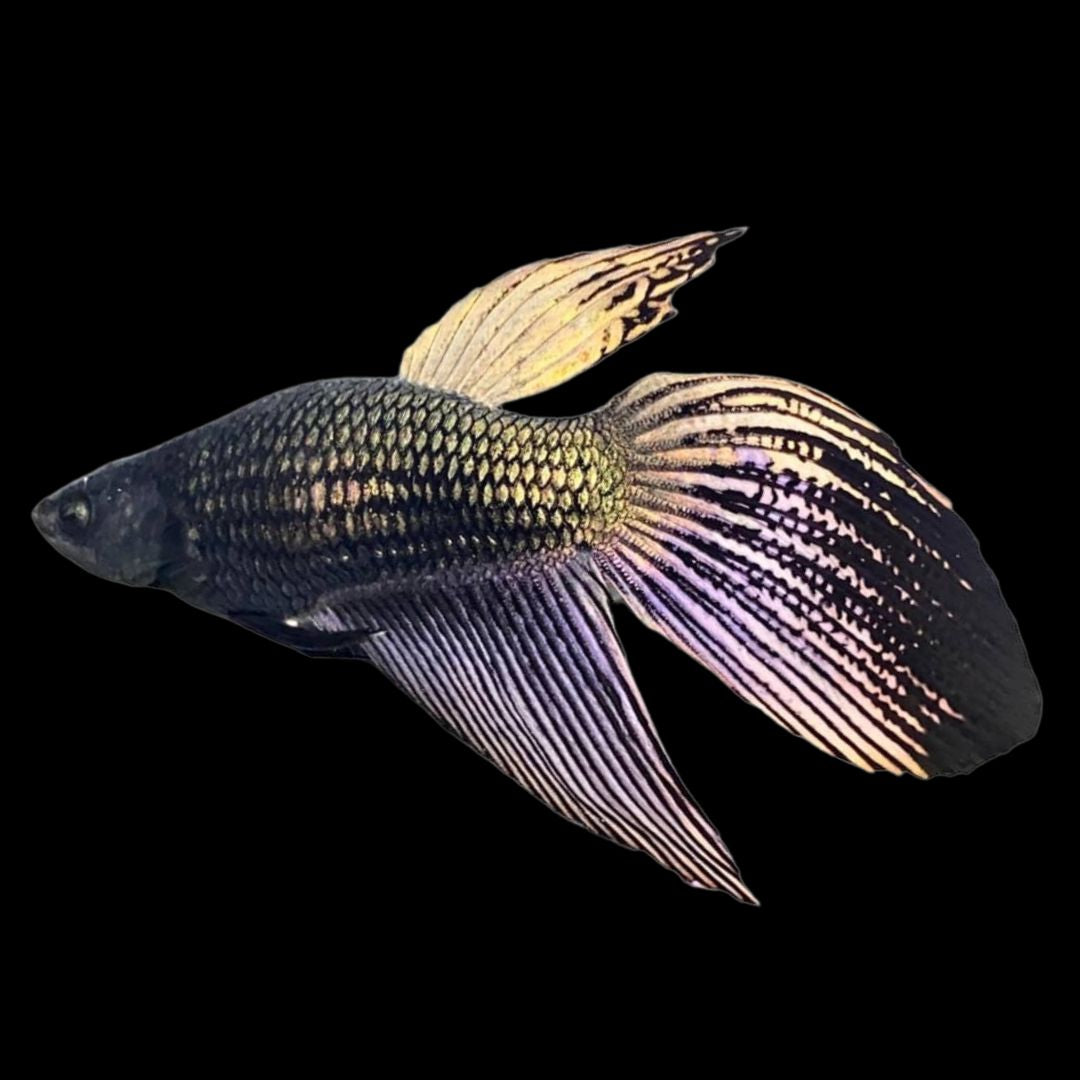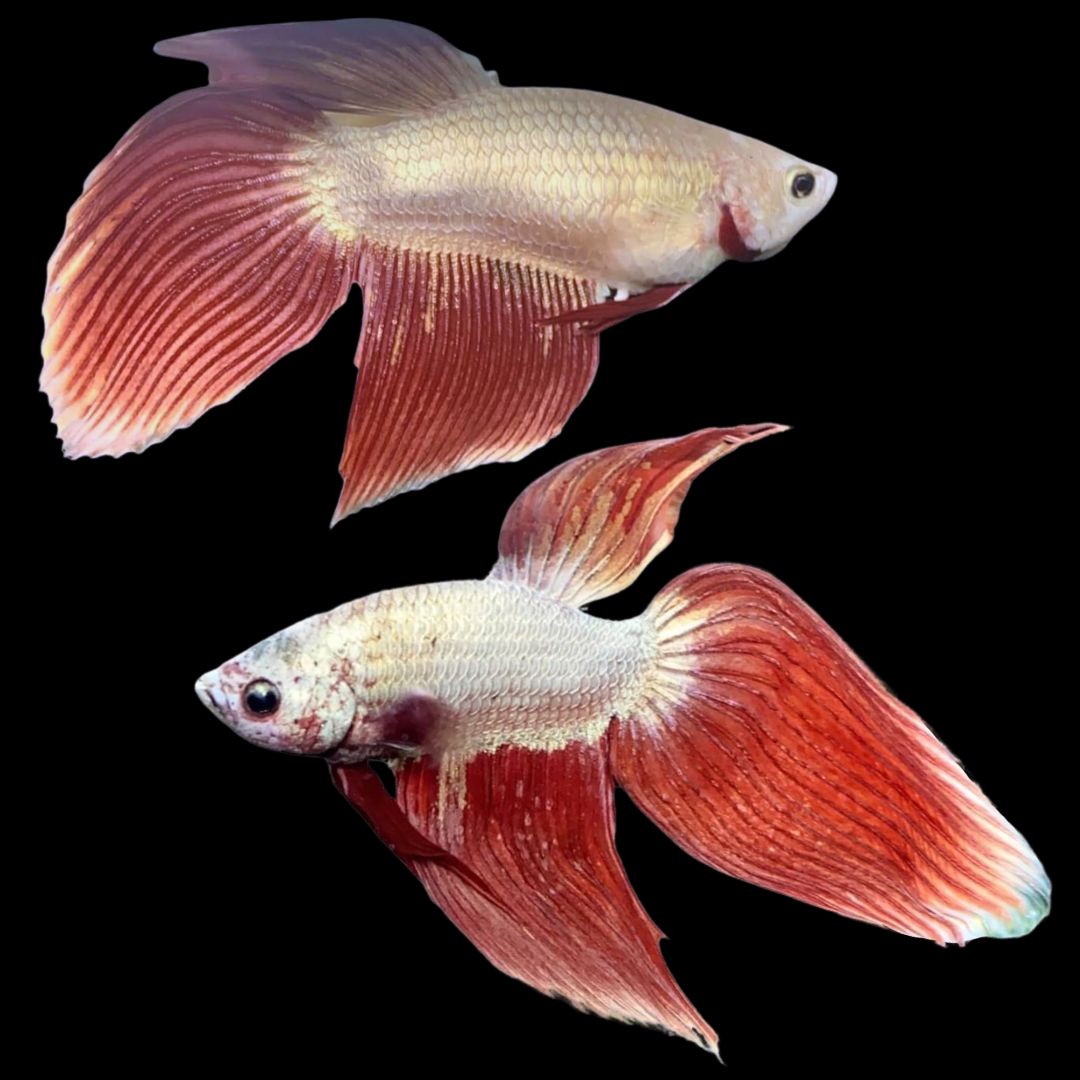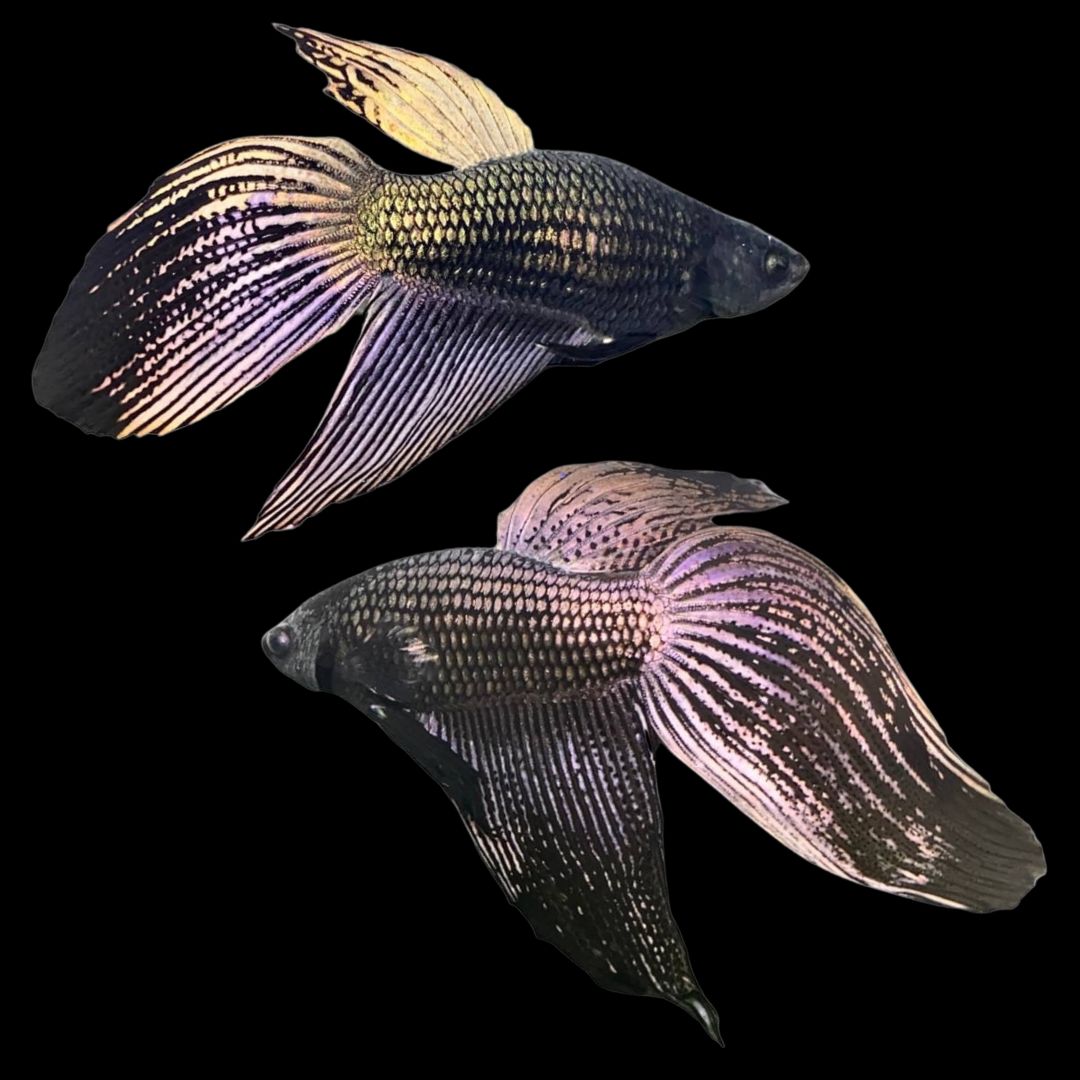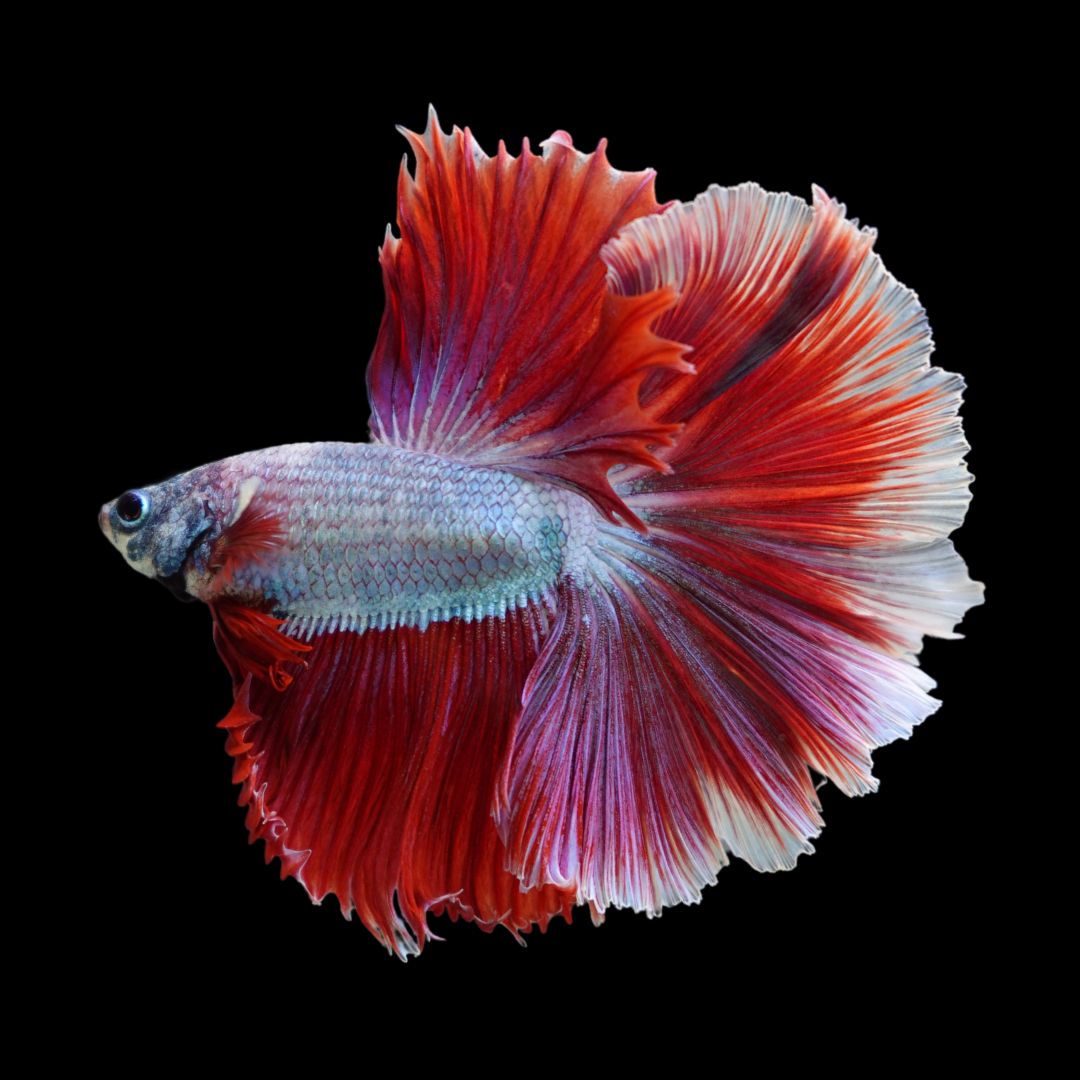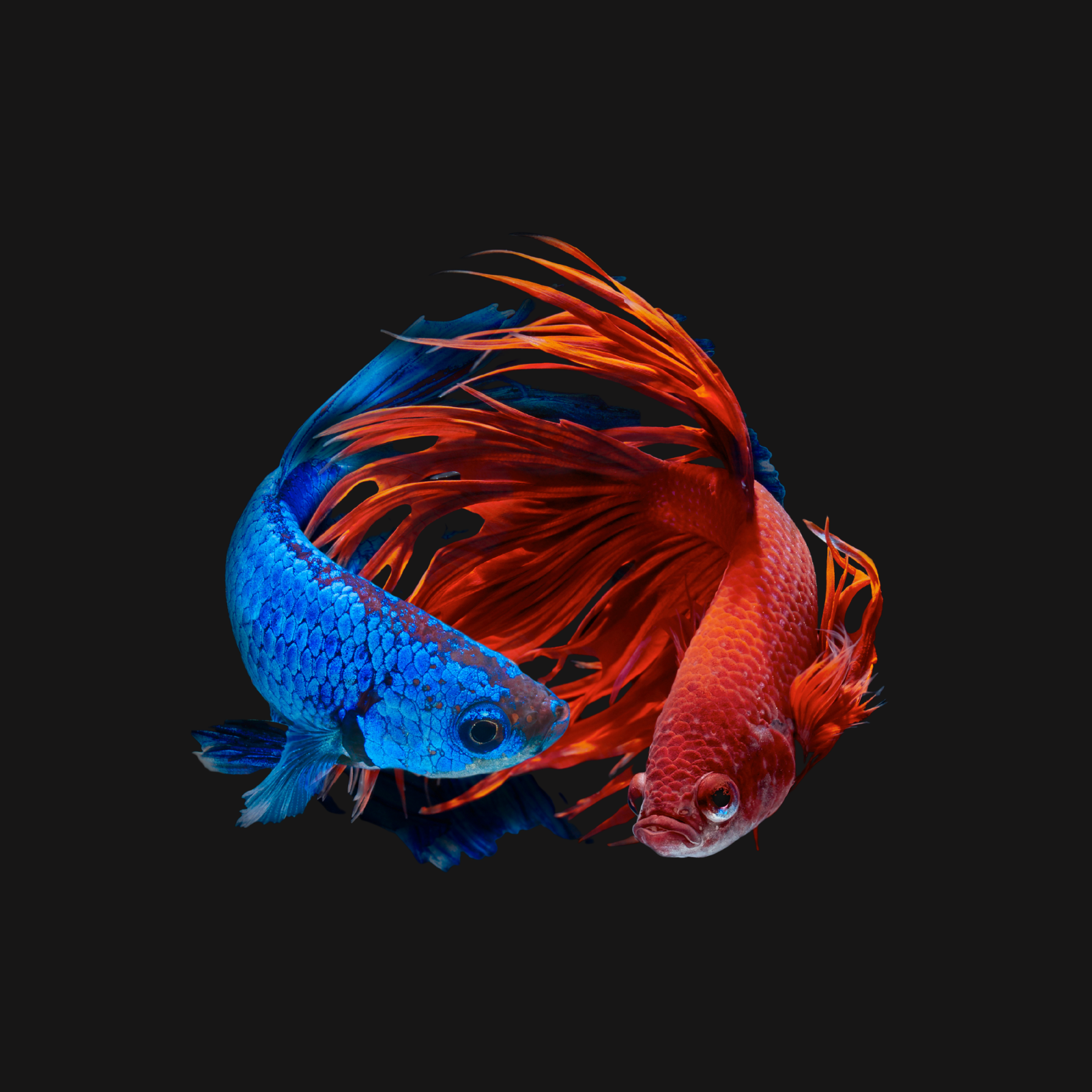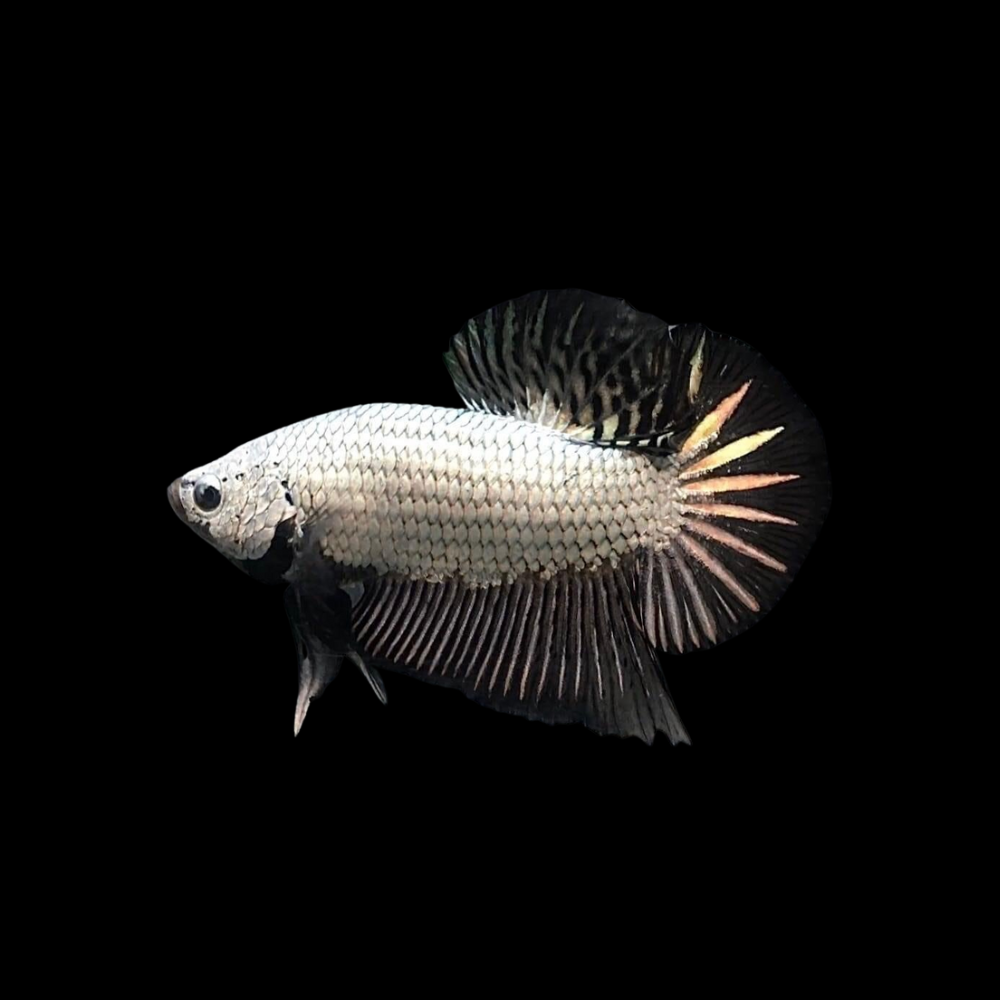
Dragon
FAQs
General About Dragon Betta Fish
Dragon Bettas display a fascinating variety of scale types, each boasting unique characteristics:
- Dragon Rosetail Betta: Known for their extravagant, flowery tail finnage, resembling the petals of a rose.
- Dragon Scale Crowntail Betta: Merges the Dragon scale's intricate texture with the elegant, spiky fins of a Crowntail.
- Dragon Plakat Betta: A fusion of the short-finned Plakat form with the distinct texture of Dragon scales.
- Dragon King Betta fish: Larger in size, this type combines the majestic presence of King Bettas with the distinct Dragon scale texture.
- Dragon Scale Halfmoon Betta: The Halfmoon Dragon Betta is a unique blend of the Dragon scale pattern with the expansive fins of a Halfmoon.
- Dragon Koi Betta: The Dragon scale koi betta mirrors the look of Koi fish, featuring vibrant colors and patterns with the trademark Dragon scale texture.
- Dragon King Crown Betta: A majestic type featuring the regal crown-like finnage of a Crowntail, combined with the larger size and grandeur of a King Betta.
- Black Dragon Plakat Betta: Combines the robust body of a Plakat with the striking, dark hues of the Black Dragon scale.
- Dragon Scale Betta Diamond Eye: This type is notable for its distinct Dragon scale pattern and the unique diamond-like shine in its eyes, adding a unique charm to its appearance.
Dragon Bettas come in a mesmerizing array of colors, each adding to their allure:
- Rainbow Dragon Betta Fish: Displays a spectrum of iridescent colors, resembling a rainbow.
- Red Dragon Betta: The Red Dragon scale betta features a deep, fiery red, often with a gleaming metallic finish.
- Black Dragon Betta: The black dragon scale betta is known for its intense, dark black coloration, providing a stark contrast.
- Platinum Dragon Betta: The platinum dragon scale betta exhibits a shiny, metallic-like appearance, similar to platinum.
- Blue Dragon Betta: Ranges from deep oceanic blues to lighter sky hues.
- Purple Dragon Betta: The purple rare dragon scale betta fish showcases shades from soft lavender to deep violet.
- Hellboy Dragon Betta: Named for its unique red and dark pattern, reminiscent of the comic character Hellboy.
- Yellow Dragon Betta: Vibrant and bright, ranging from lemon to bold sunny shades.
- White Dragon Betta: Pristine and pure, often with subtle hints of other colors.
- Green Dragon Betta: Varies from light, leafy greens to dark, rich emerald tones.
Each type and color of Dragon Betta brings a unique beauty, making them highly prized among enthusiasts.
Dragon Betta for sale are available for sale at various aquatic pet stores and online marketplaces. For enthusiasts looking for a wide selection, Our website is a renowned online destination. We specializes in Thai Betta fish, offering a range of Dragon Betta types, colors, and sizes. Thailand is known for breeding some of the most exquisite Betta fish, and our site provides access to these high-quality dragon scale betta fish for sale for collectors and hobbyists worldwide.
Dragon Bettas typically have a lifespan of 3-5 years, though this can vary based on the care they receive. Factors like water quality, diet, and stress levels significantly impact their longevity. Providing a well-maintained environment, a nutritious diet, and regular health check-ups can help extend their lifespan. Early detection of issues like fin rot or bacterial infections and prompt treatment also play a crucial role in ensuring a long, healthy life for your Dragon Betta
The average price of a Dragon Betta varies depending on its type, color, and breeder. Generally, prices can range from $30 to about $75 for the more rare dragon scale betta fish or show-quality specimens.
The White Dragon King Crown Betta is highly sought after primarily due to its stunning appearance. This type of Betta fish is known for its majestic white coloration, often with a shimmering, pearlescent quality. The "crown" aspect refers to the elaborate and cross spiky finnage, reminiscent of a crown, adding to its regal appearance. The combination of the unique color and fin shape makes it a visually striking choice for aquarium enthusiasts. Additionally, its rarity and the care required to maintain its pristine color and health contribute to its desirability and prestige among collectors and hobbyists.
To determine if your Dragon Betta meets competition qualification requirements, here are the specific criteria you should evaluate:
- White Coating on Head and Body: The entire head and body of the Dragon Betta must be coated in white. This is a primary feature for qualification.
- Fins and Tail Coloration: The fins should be free of irises, and the tail must exhibit a colorless halo. This unique characteristic is crucial for qualifying.
- Uniform Color of Fins: The fins must display a clean and uniform color that matches the body. Consistency in coloration is key.
- Absence of Scratches: The Dragon Betta should not have any scratches on its body. A flawless physical condition is required for competition.
- Eye Appearance: The eyes of the Dragon Betta should not have a white coating. This is an important aspect of their appearance.
- Ear and Pectoral Fins Coloration: Ideally, the ear fins should match the color of the pectoral fins. This contributes to an overall harmonious appearance, which is favored in contests.
Ensure your Dragon Betta aligns with these criteria to meet the competition qualifications.
Our Legacy
We work tirelessly for 30 years to uphold the high standards set by our Thai ancestors and fellow breeders, ensuring that each and every Betta Fish for sale we produce is of the highest premium quality and meets the expectations of our customers. When you buy live betta fish online from us, you're not just purchasing a beautiful and captivating pet. You're also becoming a part of a long and rich history, and joining a community of people who appreciate and value the beauty and wonder of these amazing Betta Fish.
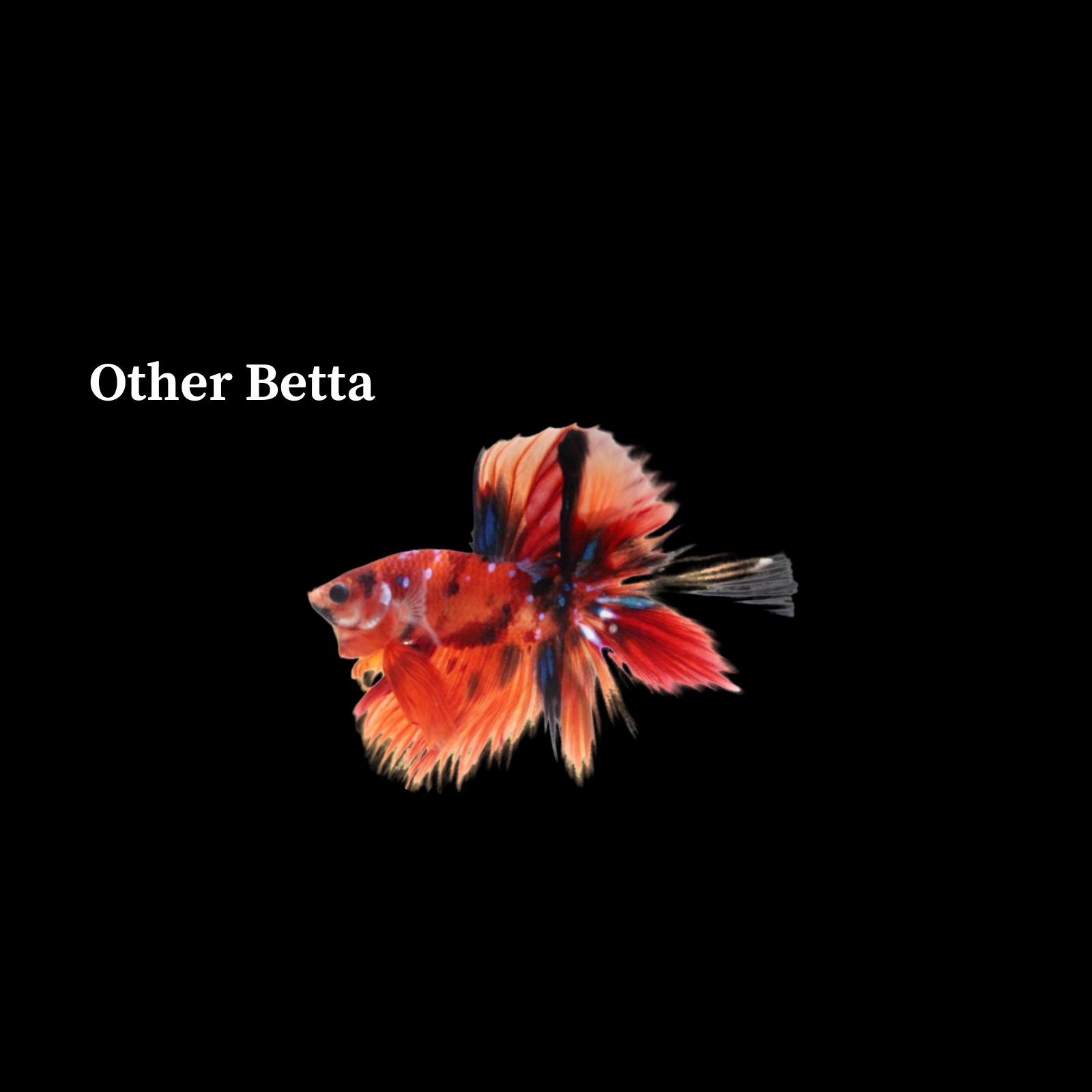
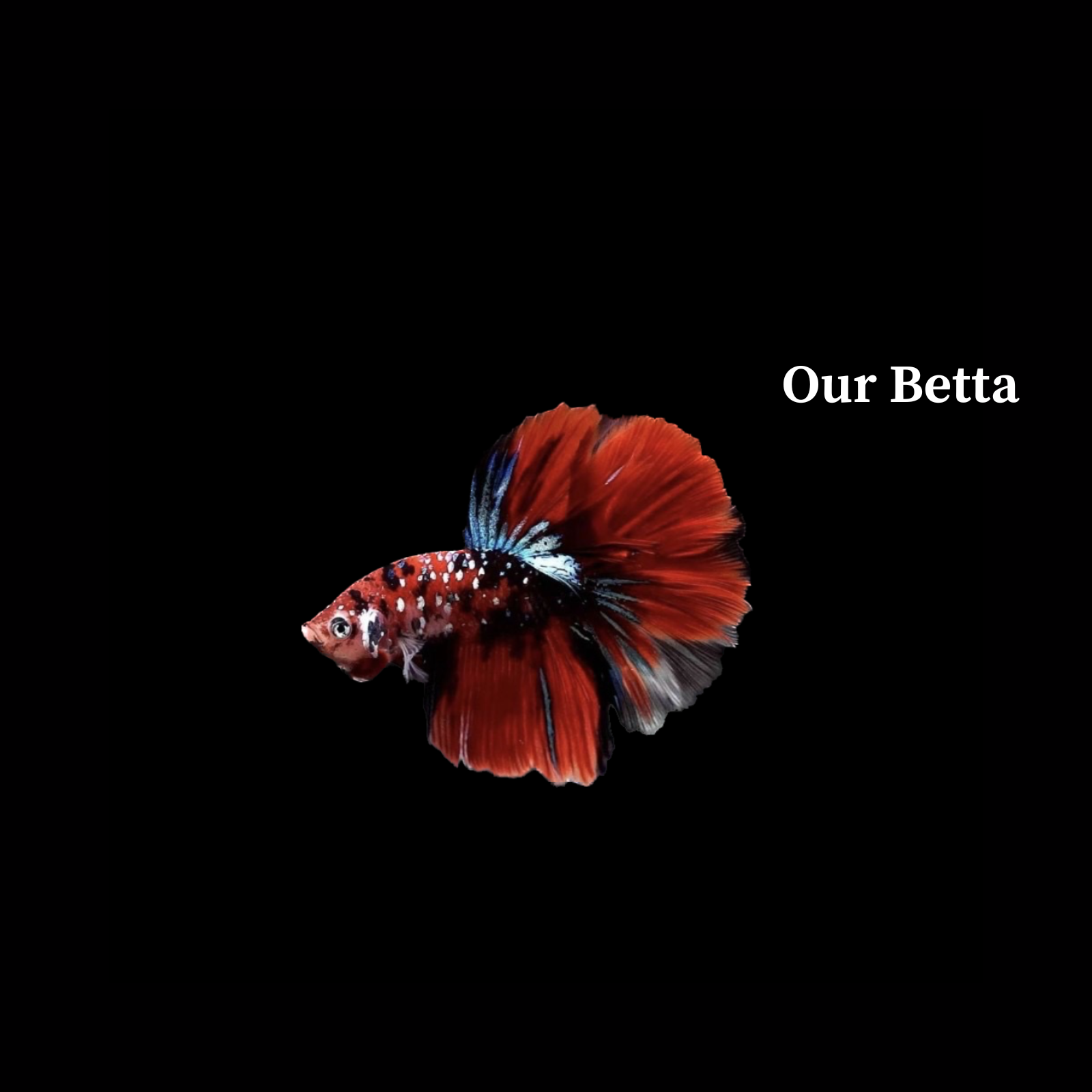
Care Specific For Dragon Betta Fish
Caring for a Dragon Betta involves providing clean, warm water with a temperature between 76-81°F and a neutral pH level. Regular water changes are crucial to prevent the buildup of toxins. A balanced diet consisting of high-quality Betta pellets and occasional treats like brine shrimp or bloodworms is essential. Dragon Bettas also require a calm environment with minimal stress and adequate hiding places in the tank, such as live plants or decorative caves. Consistent care and attention are key to ensuring the well-being of these majestic fish.
Dragon Bettas may be susceptible to common Betta ailments like fin rot, bacterial infections, and swim bladder disease. Regular tank maintenance, proper feeding, and stress reduction are essential to prevent these health issues. Prompt treatment is vital for any signs of illness.
The perfect habitat for a Dragon Betta includes a minimum tank size of 5 gallons with a gentle filtration system and stable water temperature between 76-81°F. Decorations like live plants and caves provide hiding places and reduce stress.
Dragon Betta breeding involves the male building a bubble nest to house the eggs. During courtship, males display vibrant colors and perform intricate dances to attract females. After spawning, the male tends to the nest and guards the eggs, emphasizing their protective nature during the breeding process.
Dragon Bettas breed through a unique process called bubble nesting. The male builds a nest of bubbles at the water's surface, where the eggs are kept after spawning. The breeding pair should be conditioned with high-quality food and separated after spawning for the safety of the female.
Dragon Bettas can coexist with certain fish species, but they require careful selection to avoid aggression. Compatible tank mates include small, peaceful fish like neon tetras or snails. It's crucial to monitor their interaction to ensure a harmonious environment.
A nutritious diet for Dragon Bettas should include high-quality Betta pellets as a staple, providing essential nutrients. Supplementing with live or frozen foods like bloodworms, brine shrimp, or daphnia adds variety and essential proteins. It's important to feed in small, controlled portions to avoid overfeeding and maintain water quality. Occasional fasting days can also aid in digestion.
To transport a Dragon Betta, use a small, secure container with enough water from their tank to keep them comfortable. Ensure the container is not overly spacious to prevent injury from too much movement. The water temperature should be maintained, and exposure to extreme temperatures or direct sunlight avoided. For longer journeys, using a portable battery-operated air pump can help maintain oxygen levels. Minimizing stress and keeping the Betta calm during transportation is crucial.
When a Betta fish’s scales start to stick out, it’s often a sign of a condition called “Dropsy.” Here are key points about this condition:
- Symptoms: Apart from scales sticking out (giving a pinecone-like appearance), symptoms of Dropsy include swelling or bloating of the body, lethargy, reduced appetite, and sometimes, pale coloring or redness in the fins.
- Causes: Dropsy is typically caused by a buildup of fluid inside the fish’s body, which can be due to a bacterial infection, poor water quality, or kidney failure. It’s not a disease itself but a symptom of an underlying issue.
- Treatment: Treating Dropsy can be challenging. It involves improving water quality, possibly treating the water with aquarium salt, and administering antibiotics if a bacterial infection is suspected. However, success rates vary, and the condition is often fatal if not caught early.
- Prevention: The best prevention is maintaining high-quality water conditions, regular water changes, and a balanced diet for your Betta. Avoid overcrowding and regularly check for any signs of illness.
If you suspect your Betta has Dropsy, it’s crucial to act quickly. Consult with a vet who specializes in fish or an experienced aquarist for the best course of action. Early intervention can improve the chances of recovery.
Male Dragon Bettas are typically more colorful and have larger, more elaborate fins than females. Males often display more aggressive behavior and tend to be territorial. Female Dragon Bettas are generally smaller, with shorter fins and less intense coloration. Females also have a visible white spot (ovipositor) near their ventral area, especially noticeable during breeding readiness.
A healthy Dragon Betta exhibits vibrant colors, clear eyes, and active swimming behavior. Their fins should be intact, without signs of tearing or rotting. Healthy Bettas have a good appetite and respond to their environment. Regular, unlabored breathing and a clean, unbloated body shape are also indicators of good health. It’s crucial to observe any changes in behavior or appearance, as these can be early signs of health issues.
Dragon Bettas can undergo color changes due to various factors like age, environment, diet, and health. Juvenile Bettas often develop more vibrant colors as they mature. Environmental factors like lighting and tank decor can influence their coloration. Nutritional deficiencies or health issues can also cause color changes. It’s important to provide a stable, stress-free environment and a balanced diet to maintain their vibrant colors.
Dragon Bettas should be fed once or twice a day, offering only as much food as they can consume in two minutes. Overfeeding can lead to health problems and water quality issues. Adult Bettas can also benefit from one fasting day per week to aid digestion.
A frequent misconception is that Dragon Bettas can thrive in tiny bowls. In reality, they need ample space and clean, filtered water. Another myth is that they don't require a heater; however, stable warm temperatures are crucial for their health. Additionally, while they are often seen as solitary, they can coexist with certain fish under the right conditions.
Many owners believe that Dragon Bettas can recognize them due to their interactive nature. Bettas often swim towards the glass when they see their owners and can be trained to perform simple tricks, indicating a level of awareness and recognition.
Introducing a Dragon Betta to a new tank requires acclimation. Start by floating their transport container in the tank to equalize temperature. Gradually add small amounts of tank water to the container over 30 minutes. Gently release the Betta into the tank, allowing them to explore and adjust to their new environment at their own pace.

